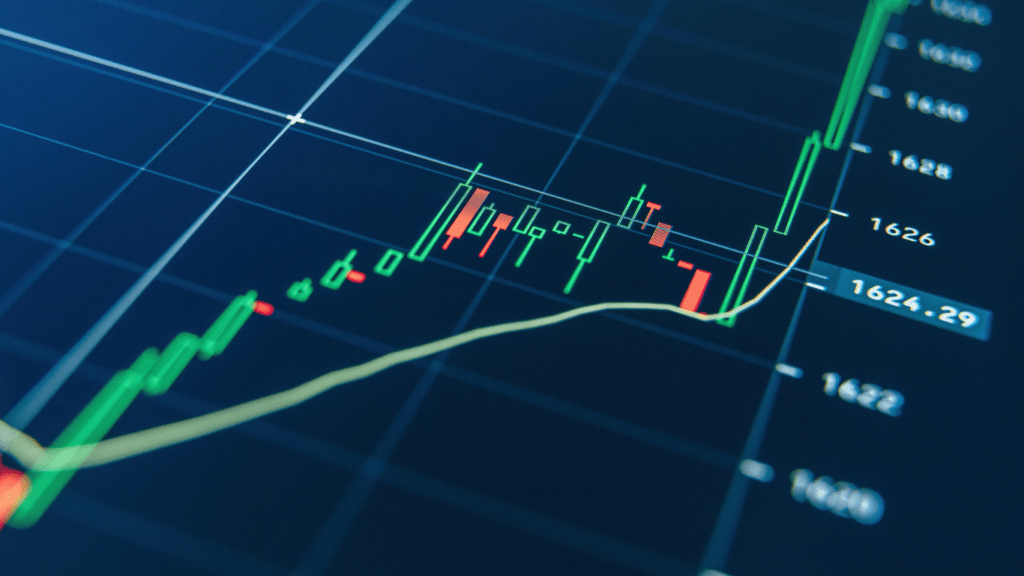When it comes to trading crypto, choosing the right strategy can make or break your success. Day trading and swing trading are two of the most popular approaches, but they cater to very different styles and goals. Understanding the key differences between these methods is crucial for anyone looking to navigate the fast-paced world of cryptocurrency.
Understanding Day Trading And Swing Trading
Day trading and swing trading represent two distinct approaches to trading cryptocurrency. Both strategies focus on profiting from market fluctuations but differ significantly in execution, timeframe, and risk management.
What Is Day Trading?
Day trading involves opening and closing positions within a single trading day. I aim to capitalize on short-term price movements, relying on technical analysis, chart patterns, and market indicators. This method often requires constant monitoring, as trades typically last from minutes to hours. For example, I might exploit small price fluctuations in Bitcoin (BTC) or Ethereum (ETH) using a 15-minute candlestick chart.
Risk and reward in day trading are high. High-frequency trades can result in quick profits, but losses accumulate just as fast if market predictions are incorrect. Consistency, a clear strategy, and emotional discipline are essential for successful day trading in the cryptocurrency market.
What Is Swing Trading?
Swing trading focuses on capturing gains from price trends that develop over several days or weeks. I hold positions longer than day traders, aiming to benefit from larger price movements. For instance, I might identify a bullish trend in Cardano (ADA) on a daily chart and hold it for 5-10 days to maximize returns.
This strategy is less time-intensive than day trading since I don’t need to monitor markets continuously. However, accurate market analysis and an understanding of fundamental factors, such as project updates or macroeconomic news, are crucial for effective swing trading. While the risk is lower due to longer holding periods, sudden market shifts can still impact profitability.
Key Differences Between Day Trading And Swing Trading
Understanding the core differences between day trading and swing trading helps align these strategies with specific trading objectives. Here’s a closer look at how these methods vary across crucial aspects.
Time Commitment And Trade Duration
Day trading demands constant market attention as trades occur within a single trading day. Positions are opened and closed in hours or minutes. This requires significant time investment and swift execution. Swing trading spans several days or weeks. With fewer trades, it allows more flexibility and less time monitoring market activity daily.
Risk And Reward Profile
Day trading carries higher short-term risks due to frequent trades and market volatility but offers potentially quick returns if executed correctly. Swing trading carries lower immediate risks as it’s less exposed to short-term market noise. However, holding positions overnight can involve risks like gap openings, where prices shift drastically before the market reopens.
Capital Requirements
Day trading typically involves higher capital requirements. Many platforms impose minimum equity thresholds, such as $25,000 for pattern day traders in regulated markets, to meet margin rules. Swing trading usually requires less initial capital, making it accessible to traders who prefer a more moderate allocation.
Analytical Tools And Strategies
Day trading emphasizes rapid technical analysis using tools like candlestick patterns, moving averages, and short-term indicators to capture quick price movements. Swing trading employs a mix of technical and fundamental analysis, relying on trendlines, support/resistance levels, and market news to anticipate broader price trends over a longer timeframe.
Pros And Cons Of Day Trading In Crypto

Day trading in crypto offers the potential for rapid returns by capitalizing on short-term market movements. While it comes with notable benefits, it also poses significant challenges.
Advantages Of Day Trading
1. Potential For Quick Profits
Day trading can generate profits within hours by leveraging market volatility. For instance, fluctuations in Bitcoin or Ethereum prices during the day provide opportunities to execute multiple profitable trades.
2. High Liquidity Access
Prominent cryptocurrencies often exhibit high liquidity, allowing traders to enter and exit positions swiftly without significant price slippage.
3. Frequent Trade Opportunities
The crypto market operates 24/7, presenting continuous opportunities for day traders to identify trends, technical indicators, and breakout patterns.
4. Skill Development
Day trading sharpens analytical and strategic trading skills due to the reliance on advanced technical tools like real-time charts, moving averages, and volume analysis.
Disadvantages Of Day Trading
1. Significant Time Commitment
Successful day trading requires constant monitoring of market movements and analysis, leaving little time for other activities.
2. High Stress Levels
Fast-paced decision-making under volatile conditions can be mentally taxing, especially when significant capital is at risk.
3. Exorbitant Trading Costs
Frequent trades within a single day result in higher transaction fees, with platforms like Binance or Coinbase charging per transaction, reducing overall profitability.
4. Increased Risk Of Losses
Rapid price swings mean misjudging a trade can result in significant losses. Leveraged trades magnify these risks further.
5. Dependence On Technical Analysis
Day traders rely almost exclusively on technical analysis, requiring expertise in interpreting complex data and minimal reliance on long-term fundamental insights.
Pros And Cons Of Swing Trading In Crypto
Swing trading in crypto focuses on medium-term strategies, aiming to profit from larger price movements across days or weeks. It offers greater flexibility and lower time demands compared to day trading.
Advantages Of Swing Trading
- Time Efficiency: Swing trading requires less frequent market monitoring, freeing up time for other activities. Unlike day trading, I can analyze trades at more convenient times instead of constantly tracking the market.
- Lower Transaction Costs: Fewer trades lead to reduced fees, allowing me to retain more profits by minimizing brokerage and exchange costs.
- Broader Analysis Mix: Swing trading benefits from using both technical and fundamental analysis. Identifying broader price trends makes it possible to capitalize on market momentum and macroeconomic factors.
- Reduced Stress Levels: Unlike day trading’s high-pressure pace, I find swing trading less intense due to longer decision-making windows. This lower stress environment reduces emotional trading risks.
Disadvantages Of Swing Trading
- Exposure to Overnight Risk: Since swing trades span multiple days, they are prone to overnight price gaps and unpredictable market events. This risk arises especially during high-volatility periods in crypto.
- Delayed Profit Realization: Waiting for larger price movements means that gains materialize over extended periods, which can be challenging for traders seeking quicker returns.
- Higher Capital Requirements for Investment: Swing trades often demand larger capital to absorb potential price swings while maintaining viable risk-to-reward ratios.
- Complex Fundamental Analysis: Understanding market dynamics and external influences in crypto, such as regulatory news or major technological updates, might require deeper research for effective trades.
Choosing The Right Strategy For You
Selecting a trading strategy that aligns with your goals, resources, and risk tolerance is critical in the crypto market. Understanding key factors and adopting practical tips can simplify this decision.
Factors To Consider
1. Time Commitment
Day trading demands constant monitoring and quick decision-making throughout the day. Swing trading suits individuals with limited availability, as analysis and trades occur over several days or weeks.
2. Risk Tolerance
High volatility in crypto markets makes day trading riskier, with the potential for rapid losses or gains. Swing trading has lower immediate risks but involves holding positions overnight, which subjects trades to potentially significant price gaps.
3. Capital Availability
Day trading often requires higher initial investments to meet margin requirements and cover frequent trading fees. Swing trading is more cost-efficient with fewer transactions but requires sufficient capital to absorb market fluctuations.
4. Analytical Approach
Day trading relies heavily on technical analysis tools to identify short-term price patterns. Swing trading involves a mix of technical indicators and fundamental analysis to evaluate longer-term price trends.
Tips For Beginners
1. Start Small
Begin with small positions to minimize the financial impact of mistakes and gain experience. Practice on demo accounts before trading with real funds.
2. Focus On Education
Learn technical indicators, chart patterns, and market conditions for day trading. For swing trading, study fundamental factors like news events, market sentiment, and macroeconomic trends.
3. Set Clear Goals
Define profit targets, risk levels, and time commitments. Day traders might aim for frequent small gains, while swing traders prioritize capturing larger price movements over extended periods.
4. Manage Risk
Use stop-loss orders and maintain a disciplined risk-to-reward ratio in both strategies. Avoid emotional decision-making by sticking to pre-determined plans.
5. Leverage Tools Wisely
Use trading software and platforms suited to your strategy. For day trading, prioritize advanced charting tools. For swing trading, focus on data analysis tools that examine broader market trends.


 Founder & Blockchain Visionary
Founder & Blockchain Visionary

